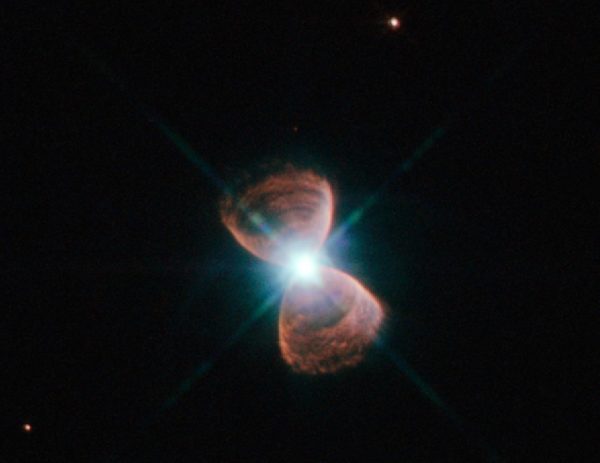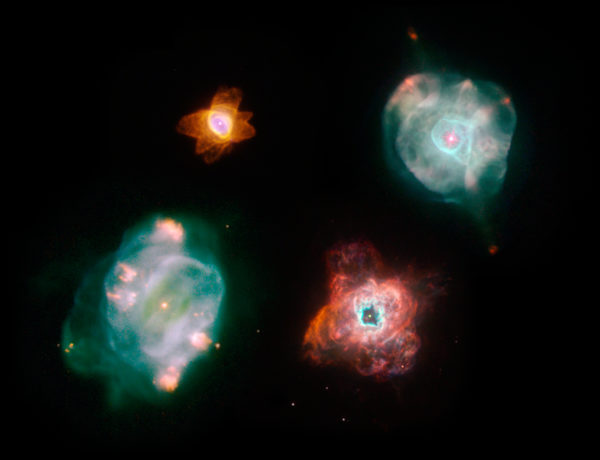"A bit of mould is a pleiad of flowers; a nebula is an ant-hill of stars." -Victor Hugo
In the distant future, about 7 billion years from now, our Sun will run out of all the nuclear fuel it’s capable of burning in its core. As it contracts under its own gravity, radiation becomes unable to hold it up any longer. Gravitation takes over, and the outer layers get blown off as the core contracts down into a white dwarf.
 A star reaching the end of its life goes from fusing nuclei to blowing off its outer layers and contracting down. Image credit: NASA, ESA, and A. Zijlstra (The University of Manchester); Acknowledgment: J. Barrington (Hubble's Hidden Treasures Competition).
A star reaching the end of its life goes from fusing nuclei to blowing off its outer layers and contracting down. Image credit: NASA, ESA, and A. Zijlstra (The University of Manchester); Acknowledgment: J. Barrington (Hubble's Hidden Treasures Competition).
These outer layers, containing hydrogen and a slew of heavier elements, will come to enrich the interstellar medium by forming a planetary nebula. Various elements glow in different wavelengths, and the nebula takes on a variety of temperatures throughout. But most spectacularly, different shapes and morphologies come about depending on factors like the star’s rotation speed, the presence or absence of a companion and other, yet-undetermined factors.
 Four individual planetary nebulae -- He 2-47, NGC 5315, IC 4593, and NGC 5307 -- were imaged by Hubble in February of 2007. Image credit: NASA, ESA, and The Hubble Heritage Team (STScI/AURA).
Four individual planetary nebulae -- He 2-47, NGC 5315, IC 4593, and NGC 5307 -- were imaged by Hubble in February of 2007. Image credit: NASA, ESA, and The Hubble Heritage Team (STScI/AURA).
Come get an amazing show on this edition of Mostly Mute Monday!

Absolutely spectacular ! It's sometimes hard to get a handle on how much energy is expended in each of the photo's.
Have a safe holiday, you lot. Back in a few weeks.